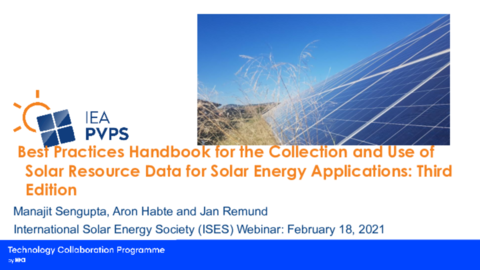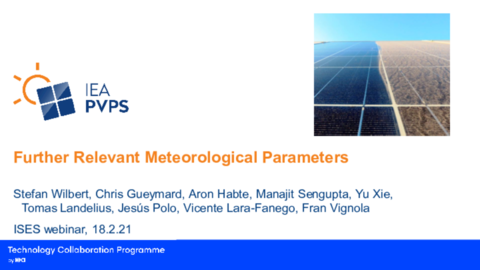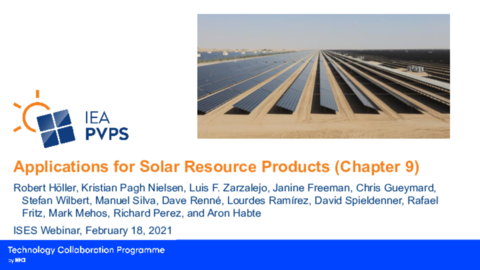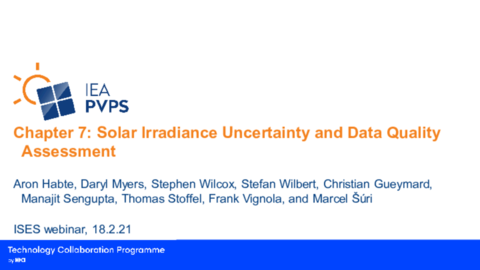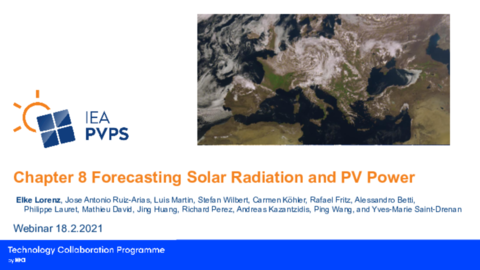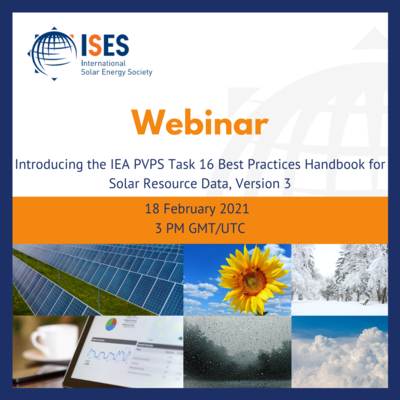
Introducing the IEA PVPS Task 16 Best Practices Handbook for Solar Resource Data, Version 3
This webinar seeks to introduce a new edition of the widely used IEA PVPS Task 16 Best Practices Handbook on Solar Resource Data. The first edition of the Best Practices Handbook was released in 2015 and the second edition in 2017. The third edition is being released within 3 years of the previous edition and is testament to the fact there has been significant development in the areas of solar resource, measurement, modeling forecasting and applications. This handbook is the effort of over 40 experts from 13 countries who have come together under the auspices of IEA PVPS Task 16, to write new chapters and also significantly update older chapters.
This webinar will introduce attendees to the contents of the handbook by providing a summary introduction to all the 11 chapters. Additional presentations in this webinar will focus on new or updated chapters devoted to newer meteorological parameter, solar forecasting, measurement and modeling uncertainty and applications of solar resource data.
The webinar will last 90 minutes including a dedicated Q/A session for the audience to ask questions. A recording of the webinar as well as the presentations given by the panellists will be made available online.
Speakers
Jan Remund
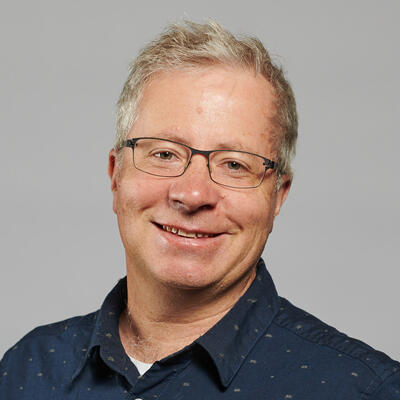
Jan Remund has a background of Geography and Climatology and works since more than 20 years at the SME Meteotest in Berne, Switzerland. He is the project lead of global solar radiation database Meteonorm and the operating agent of the IEA PVPS Task 16 since 2017.
Manajit Sengupta

Dr. Manajit Sengupta is currently Chief Scientist in Predictive Analytics and Sensing at NREL and leads research in the areas of solar resource assessment, solar forecasting and PV Variability.
He has 25 years of experience in atmospheric modeling, assimilation and observational analysis and he is an expert in remote sensing, forecasting and analysis of clouds and solar radiation.
Dr. Sengupta was a member of the GOES-R science team responsible for creating products for the next- generation of NOAA’s operational weather satellite.
He has also led research, as part of DOE’s Climate Change Program, to study the impact of clouds on surface radiation.
Stefan Wilbert
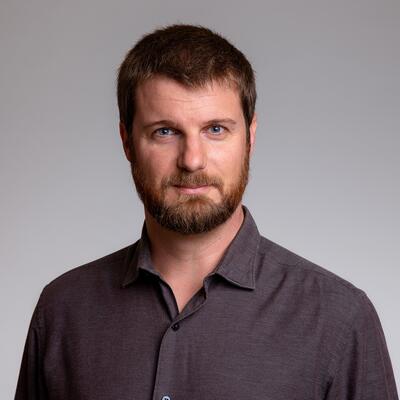
Dr. rer. nat. Stefan Wilbert leads the research group “Solar Energy Meteorology” at DLR’s Institute of Solar Research in Almería, Spain. He has 15 years of experience in the field of meteorological measurements and models for solar energy applications, forecasting and solar power plant simulation. Mr. Wilbert acts as sub task and activity leader in the International Energy Agency’s PV Power Systems task on solar resources and forecasting.
Robert Höller
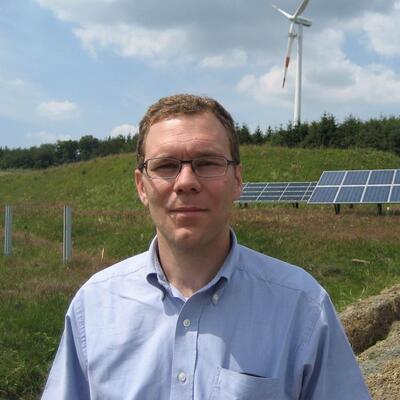
Robert Höller has a PhD in energy science and a master degree in physics. He has specialized in renewable energy, in particular solar and wind energy, and has more than 20 years of professional experience both as a researcher in energy science and atmospheric aerosol physics, as well as a renewable energy project engineer.
Aron Habte

Aron Habte is a research scientist at the National Renewable Energy Laboratory in the Sensing and Predictive Analytics Group. For the past 10 years, he has been working on research and development experience in solar and atmospheric radiation measurements, modeling, data quality assessment, uncertainty quantification, and standards/best practices development. He is chair of ISO/TC 180/SC 1 Climate - Measurement and data. Furthermore, he is chair of ASTM International standards subcommittee on radiometry and vice chair of ASTM International committee on Solar, Geothermal and Other Alternative Energy Sources.
Elke Lorenz

Dr. Elke Lorenz is a physicist and heads the Energy Meteorology group at Fraunhofer ISE since 2016. Before she worked in the solar energy meteorology group of the University of Oldenburg for more than 15 year, starting with her PhD on satellite based solar irradiance forecasting and heading the group from 2011-2016.
Her research focus is on PV power forecasting and solar irradiance modeling. She has managed many national and international research projects. She led the subtasks on ‘Solar Irradiance Forecasting” in the IEA Tasks on solar resource assessment (IEA SHC Tasks 36 and 46, IEA PVPS Task 16).
